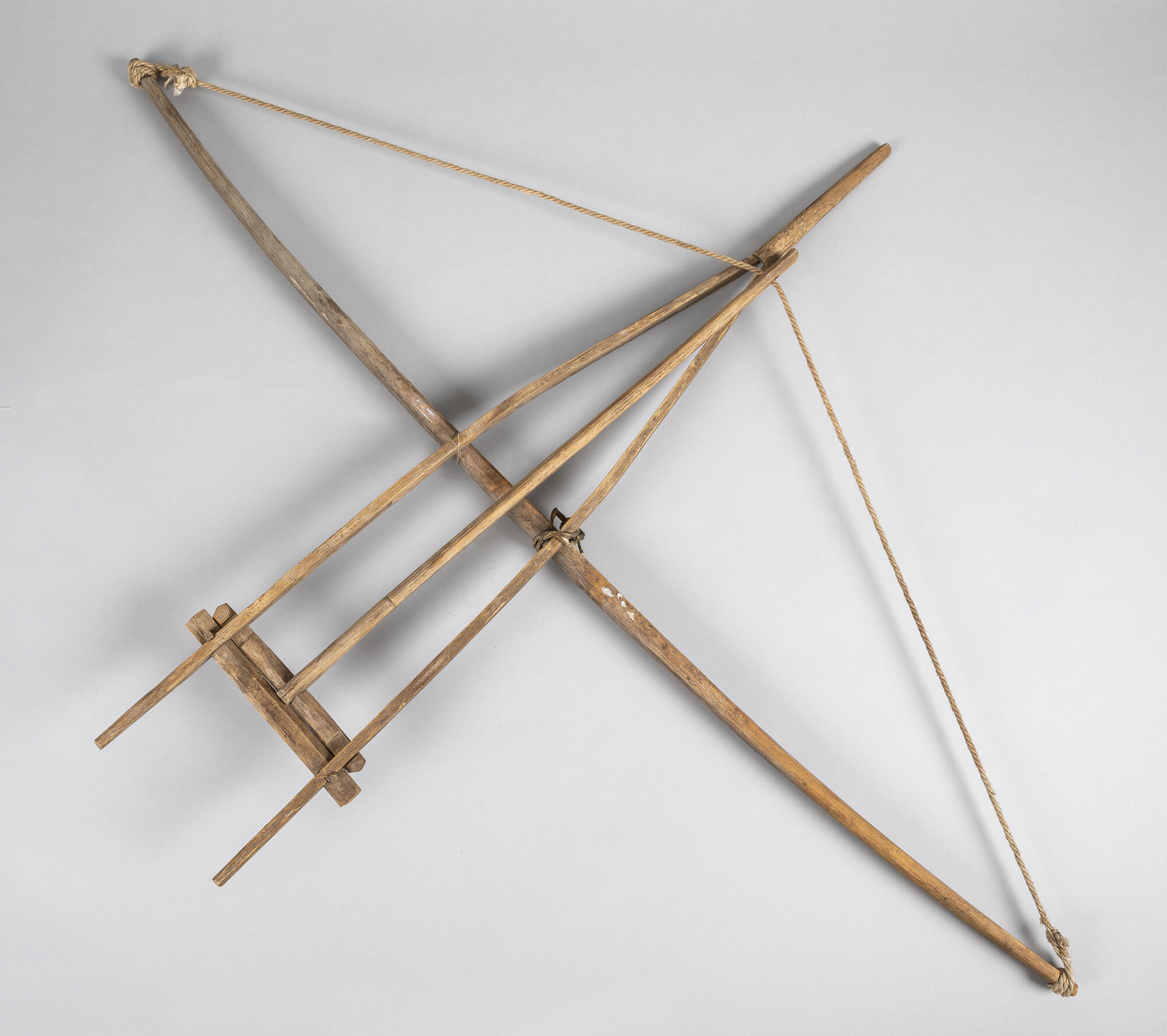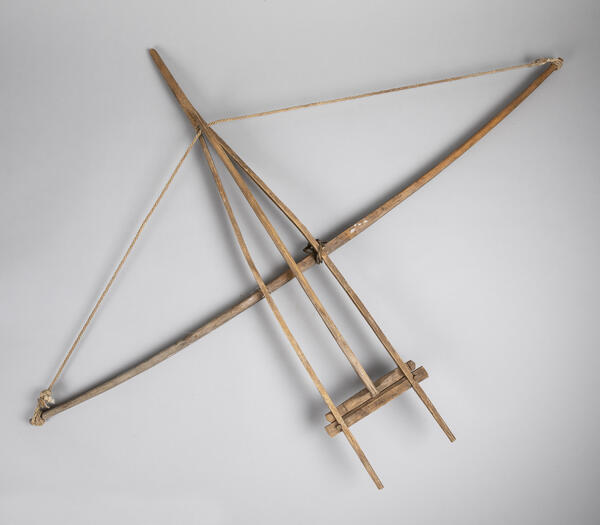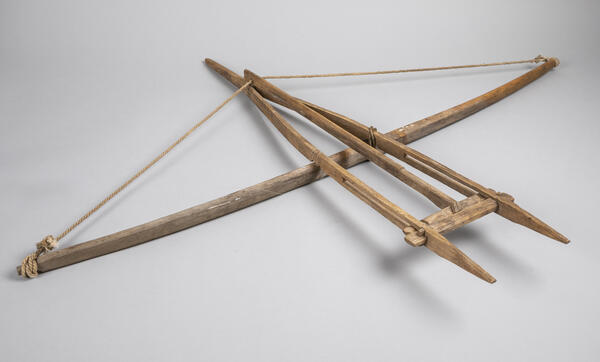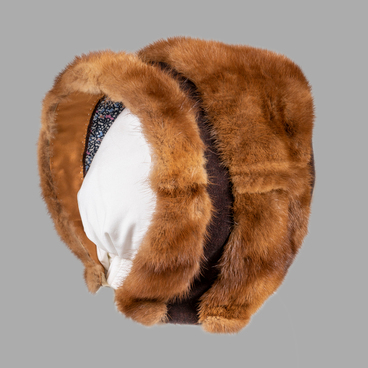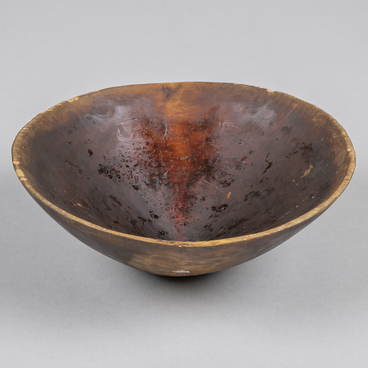In the past, hunting, along with fishing, was an important part of the middle-Ob economy. Furthermore, in the 17th–18th centuries, the demand for animal pelts in the Russian markets increased dramatically. Expensive pelts were sold, exchanged for other goods, and used to pay the yasak tax (fur tax for indigenous peoples of the North and Siberia). Fur hunting was of highest economic importance. And even at the end of the 19th century, traps and snares dominated over guns in the hunting trade.
Hunters tried to minimize their hunting expenses while inflicting as little damage to the pelts of their prey. Obtaining valuable animal pelt without defects could only be achieved by using traps. Besides foothold traps, there were also cherkans.
A cherkan is a type of trap that crushes the prey. It was designed to catch small (smaller than sables) mammals. These traps were placed along animal trails, holes and dens.
A cherkan trap consists of a frame, a bow, a T-shaped arrow, a trigger hook and a trigger. All cherkans operate based on the same principle: a T-shaped rod moves along the guide slots from top to bottom of the frame. The stretched bowline moves the rod. The trigger hook is connected to the trigger with a cord. To set the trap one must place the trigger and trigger hook and pull the T-shaped arrow through the hole holding the arrow and bowline with one’s fingers. This prevents the hunter from injuring his fingers if something goes wrong.
The advantage of using a cherkan trap is that it is made of an easily accessible material — willow wood, which does not spoil the valuable pelt of a fur-bearing animal. The disadvantages of this trap include inconveniences during transportation and limited installation options when compared to the foothold trap.
The cherkan was a piece of hunting equipment not only for the indigenous peoples of the North — hunters in Eastern Europe used them as well. Today such traps can only be seen in museums. The cherkan trap on display was transferred to the Ugut Museum of Local History by residents of the Bolshoy Yugan and Maly Yugan rivers.
